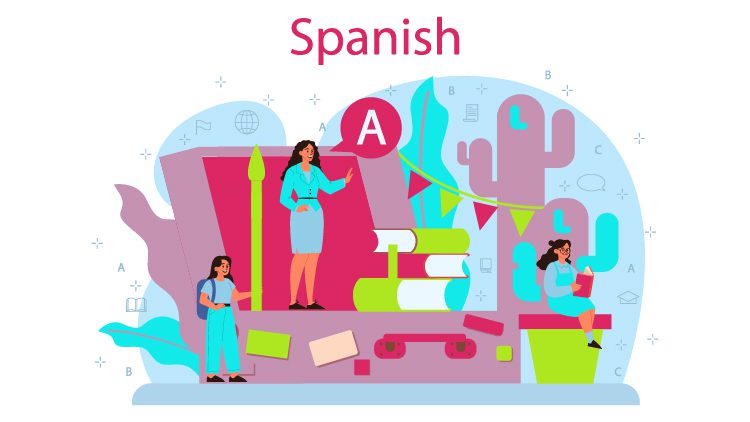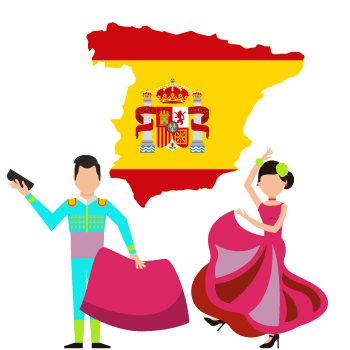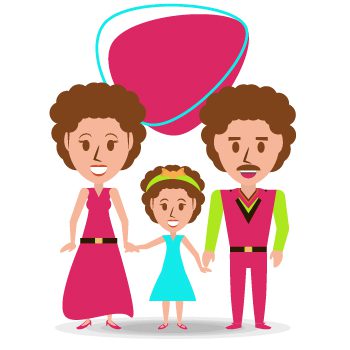
Which Language Family Does Spanish Belong To?
Indo-European
The Indo-European language family is one of the most prominent language families in the world and includes some of the most widely-spoken languages today. Spanish is a member of this language family, which includes hundreds of languages once spoken by people in Europe and parts of Asia. The Spanish and English came from Indo-European Families. The Indo-European language family is divided into Romance, Germanic, and Slavic subgroups. Spanish belongs to the Romance language subgroup, which developed from the Latin language spoken in the 15th century. The Romance language family includes other languages such as French, Portuguese, and Italian. The law codes were translated into Spanish in the 12th century. Spanish is an official language in many countries and the primary language for millions worldwide. Spanish is also commonly used as a foreign language in many regions and is taught in schools and universities. Additionally, Spanish is spoken in many countries worldwide, including the United States, where it is the second-most spoken language after English. In addition to its use as an official language, Spanish is also spoken as a native language in many countries across Europe and South America. The dialects of Spanish vary depending on the region, but all are part of the West Iberian language family, which developed from Latin during the 9th to 16th centuries. By the 20th century, Spanish had become a popular language worldwide and is now spoken by over 400 million people worldwide. In conclusion, Spanish is a member of the Indo-European language family and is part of the Romance language subgroup. It is an official language in many countries and is used as a primary language in many Spanish-speaking countries. Additionally, Spanish has developed various regional dialects that are still used today.


Romance languages
Romance languages belong to the Indo-European language family and are primarily spoken in Europe, North, and South America, and parts of Africa. Romance languages include Spanish, French, Portuguese, Italian, Romanian, and Catalan. Spanish is the most widely spoken Romance language and the native language of around 500 million people.
Spanish is the official language of 21 countries and is spoken as a primary language in many more countries where it is not the national language. Spanish has been present in the Iberian Peninsula since the 9th century and became increasingly popular with the spread of Castilian in the 15th century. Since then, it has evolved into many regional dialects, such as Andalusian, Galician-Portuguese, and Castilian.
In the 16th century, Spanish began to be exported to other countries. By the 19th century, Spanish had become an essential foreign language in many countries, mainly the Americas. In the 20th century, the number of Spanish speakers grew significantly with the increasing number of immigrants from Spanish-speaking countries. Today, Spanish is one of the most widely spoken languages in the world. With its extensive native and international speaker base, it is a language of immense cultural importance.
Ibero-Romance languages
The Ibero-Romance languages, or West Iberian, are a subfamily of the Romance languages. These languages include Spanish, Portuguese, Galician, and Catalan. They are native languages of countries located in the Iberian Peninsula, South America, and the Caribbean. Spanish is the most widely spoken language within the Ibero-Romance family and is used as an official language in more than twenty countries worldwide. It is also the primary language spoken in Spain, which has been used since the 15th century. While Standard Spanish is used in formal settings and media, various regional dialects that differ in vocabulary, grammar, and pronunciation are spoken throughout the country. The origins of Spanish can be traced back to the 9th century when it was used as a foreign language by Arabic-speaking Moors who had invaded and conquered much of the Iberian Peninsula. Since then, Spanish has evolved into the form we know today, with the written form being standardized during the 16th century. During the 19th and 20th centuries, Spanish began to spread even further beyond its traditional boundaries, becoming one of the world’s most widely spoken Indo-European languages. Today, over 500 million people worldwide are native Spanish speakers, and it is used as a primary or secondary language in many Spanish-speaking countries. As a Romance language, it is related to other languages, such as French, Italian, and Portuguese, belonging to the Indo-European language family.


West Iberian languages
The West Iberian languages are a subgroup of the Romance languages spoken mainly in the Iberian Peninsula. They include the Spanish language, regional dialects, and the Astur-Leonese and Galician-Portuguese languages. These languages are descendants of Latin, which was introduced to the Iberian Peninsula in the 9th century. Spanish is the most widespread West Iberian language spoken by over 480 million people worldwide. It is the official language of 21 countries and is also used as a foreign language in many others. Spanish is Spain’s primary language and the native language of Mexico and many Central and South American countries. Due to its wide variety of dialects, Spanish has evolved significantly over the centuries. The language began to emerge in its current form during the 15th century and is often called “Old Spanish” or “Medieval Spanish.” In the 16th century, Spanish became the national language of Spain and continued to evolve through the 19th and 20th centuries. Today, there are numerous regional dialects of Spanish spoken around the world. These dialects have been shaped by centuries of migration, conquest, and colonization. For example, there are distinct Spanish-speaking countries and regions with regional dialects, such as Argentina, Mexico, Cuba, Colombia, and Spain. As an Indo-European language family, West Iberian languages have had a significant influence on other languages around the world. From Spanish, many words have been borrowed into English and other languages. In addition, Spanish is one of the official languages of the United Nations, making it a primary language of international communication. The West Iberian languages have become an essential part of global culture, as millions now speak them of people across the globe. Whether you’re a native Spanish speaker or learning it as a foreign language, it’s easy to see why Spanish has become such an integral part of our lives. Read more about what language family is in French.
What is the language family of Spanish?
Spanish belongs to the Romance language family, which evolved from Vulgar Latin, the spoken language of the Roman Empire.
What other languages are part of the Romance language family?
Other languages that are part of the Romance language family include French, Italian, Portuguese, Romanian, and Catalan.
How did Spanish evolve from Latin?
Spanish evolved from Vulgar Latin, the spoken language of the Roman Empire, which was brought to the Iberian Peninsula by the Roman conquest in the 3rd century BC. Over time, the language evolved through the influence of other languages and dialects, such as Visigothic and Arabic, until it became the Spanish language we know today.
Is Spanish the only language spoken in Spain?
No, Spanish is not the only language spoken in Spain. Other languages spoken in Spain include Catalan, Galician, and Basque. However, Spanish is the most widely spoken language in the country, and it is the official language.
How many people in the world speak Spanish?
Spanish is the second most spoken language globally, with over 580 million speakers worldwide. It is the official language in 21 countries, including Spain, Mexico, and Central and South America.

